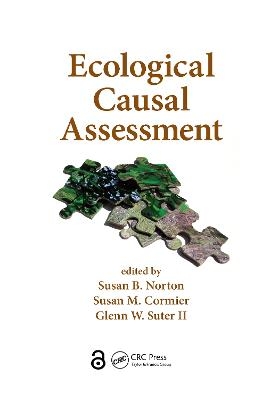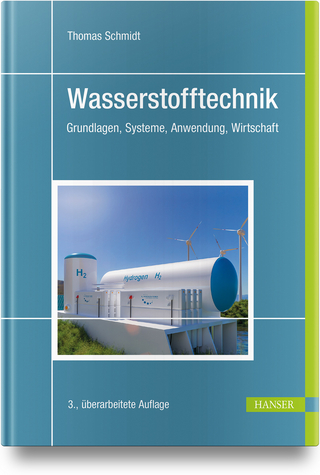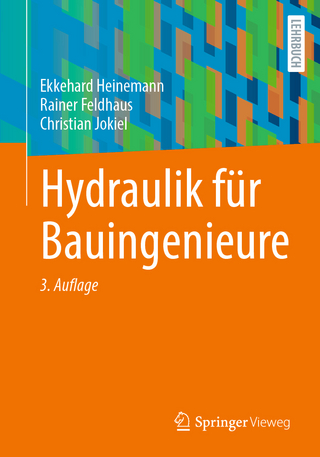
Ecological Causal Assessment
CRC Press (Verlag)
978-1-138-07393-7 (ISBN)
The book provides a deeper understanding of different philosophical and analytical approaches, and of cognitive tendencies that can lead to errors. It describes formal processes for causal assessment that are particularly helpful when the situation is complex or contentious. It also describes how to approach the analysis of available data and to optimize collection efforts. The text then details a transparent process that helps others replicate results and can be used to convince skeptics that the true cause has been identified. Several detailed case studies show how to apply the process to streams, watersheds, and a terrestrial wildlife population.
Causal assessment is a challenging, but endlessly fascinating endeavor. Success requires the persistence to figure things out and solid strategies for using the information that you have and getting more of the right kind of information that you need. This book gives you just that: the skills, knowledge, and confidence needed to successfully unravel tough environmental problems and build the knowledge base for effective management solutions.
Read interview about this book with author Sue Norton here:
http://www.freshwater-science.org/Publications/Newsletter-In-The-Drift/ITD--Fall-2015.cfm#itdqna
Susan B. Norton is a senior ecologist in the U.S. Environmental Protection Agency’s National Center for Environmental Assessment. Since joining the EPA in 1988, Dr. Norton has developed methods and guidance to better use ecological knowledge to inform environmental decisions. She is the lead author of the 2011 EPA review “The Effects of Mountaintop Mines and Valley Fills on Aquatic Ecosystems of the Central Appalachian Coalfields.” She co-led the development of the EPA’s Causal Analysis/Diagnosis Decision Information System (www.epa.gov/caddis) and contributed to many agency guidance documents including the 2000 Stressor Identification Guidance document, the 1998 Guidelines for Ecological Risk Assessment, the 1993 Wildlife Exposure Factors Handbook, and the 1992 Framework for Ecological Risk Assessment. She has published numerous articles and book chapters on ecological assessment and edited the book Ecological Assessment of Aquatic Resources: Linking Science to Decision-Making. Dr. Norton earned her BS in plant science from The Pennsylvania State University, her MS in natural resources from Cornell University, and her PhD in environmental biology from George Mason University. Susan M. Cormier is a senior scientist with the U.S. EPA Office of Research and Development, having held both scientific and managerial positions. Before joining the U.S. EPA, she was an assistant professor at Vassar College, New York, and University of Louisville, Kentucky. Dr. Cormier earned her BA from the University of New Hampshire, her MS from the University of South Florida, and her PhD from Clark University of Worcester, Massachusetts, with stints at the Marine Biological Laboratories of Woods Hole, Discovery Bay Marine Laboratory, Jamaica, and the Bermuda Biological Station for Research. She has authored more than 100 peer-reviewed publications making substantive contributions to the development of methods for biocriteria, water quality criteria, causal assessment, and ecological risk assessment. Dr. Cormier co-led the development of the U.S. EPA Stressor Identification Guidance for the Agency and the Causal Analysis/Diagnosis Decision Information System (CADDIS) website and has applied these methods to identify and resolve causes of biological impairments in watersheds all over the country and influenced assessments worldwide. Her research and professional activity center on a recurring theme of generating and assessing scientific information to inform environmental management decisions. Glenn W. Suter II is science advisor in the U.S. EPA’s National Center for Environmental Assessment and Chairman of the Risk Assessment Forum’s Ecological Oversight Committee. He has authored more than 200 publications including 3 authored books and 3 edited books over his 37-year career. He has received the SETAC Founder’s Award and the AEHS Career Achievement Award, and is an elected fellow of the AAAS. His interests include ecological epidemiology, ecological risk assessment, and the conceptual bases for environmental science and decision-making. Since he left Oak Ridge National Laboratory for the U.S. EPA, it has been his pleasure and honor to work with Drs. Cormier and Norton on causal assessment.
Part 1: Introduction. Introduction. History of Causation and Causal Concepts. Causal Analysis and Human Cognition. Part 2: Conducting Causal Assessments. Framing Assessments. Conceptual Model Diagrams As a Structure for Information Organization and Analysis. Covariance and Confounding. Multiple Cases. Causal Arguments and Evidence. Sources of Evidence: Case-specific Observations. Sources of Evidence: Experiments and Manipulations. Source of Evidence: Observational Studies. Other Sources of Evidence. Forming Causal Conclusions. Presenting the Causal Case. Evaluating and Using the Results of Causal Assessments. Part 3: Case Studies. Stressor Identification/Aquatic (Long Creek). Stressor Identification/Terrestrial (Kit Fox). Stressor Identification/Aquatic (Northern Rivers). Case Vignettes.
| Erscheinungsdatum | 28.10.2017 |
|---|---|
| Reihe/Serie | Environmental Assessment and Management |
| Zusatzinfo | 57 Tables, black and white; 5 Illustrations, color; 78 Illustrations, black and white |
| Verlagsort | London |
| Sprache | englisch |
| Maße | 156 x 234 mm |
| Gewicht | 861 g |
| Themenwelt | Naturwissenschaften ► Biologie ► Ökologie / Naturschutz |
| Naturwissenschaften ► Geowissenschaften ► Geophysik | |
| Naturwissenschaften ► Geowissenschaften ► Hydrologie / Ozeanografie | |
| ISBN-10 | 1-138-07393-8 / 1138073938 |
| ISBN-13 | 978-1-138-07393-7 / 9781138073937 |
| Zustand | Neuware |
| Informationen gemäß Produktsicherheitsverordnung (GPSR) | |
| Haben Sie eine Frage zum Produkt? |
aus dem Bereich


